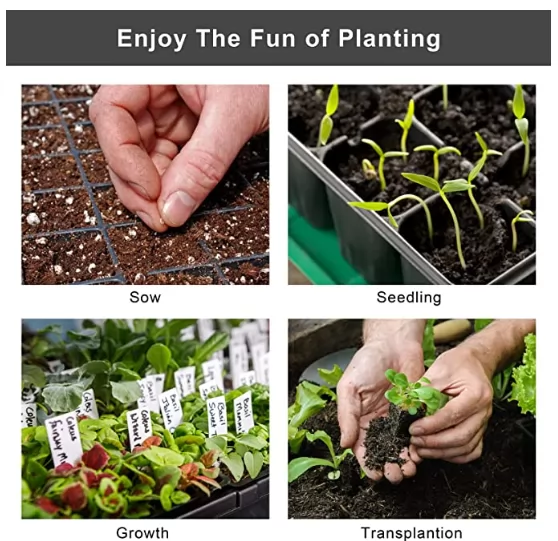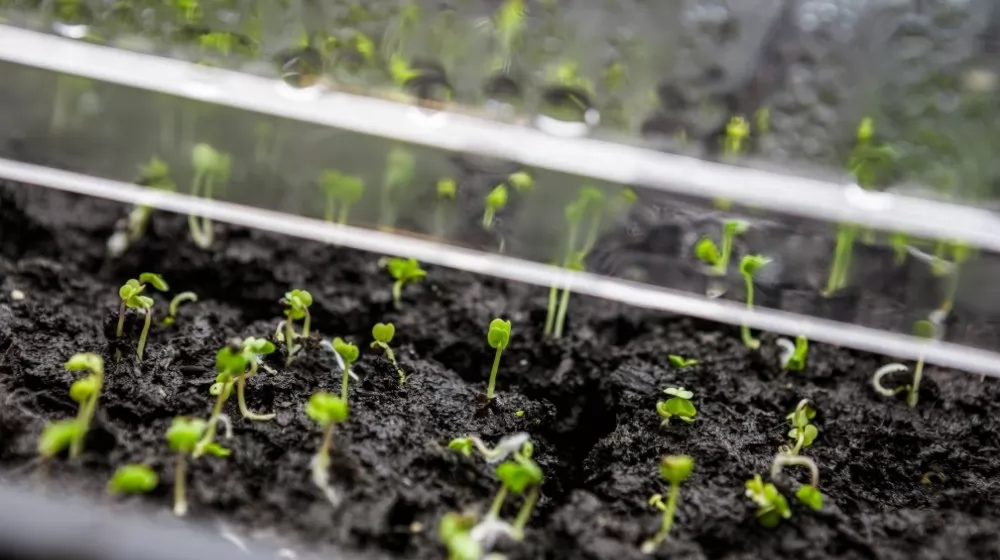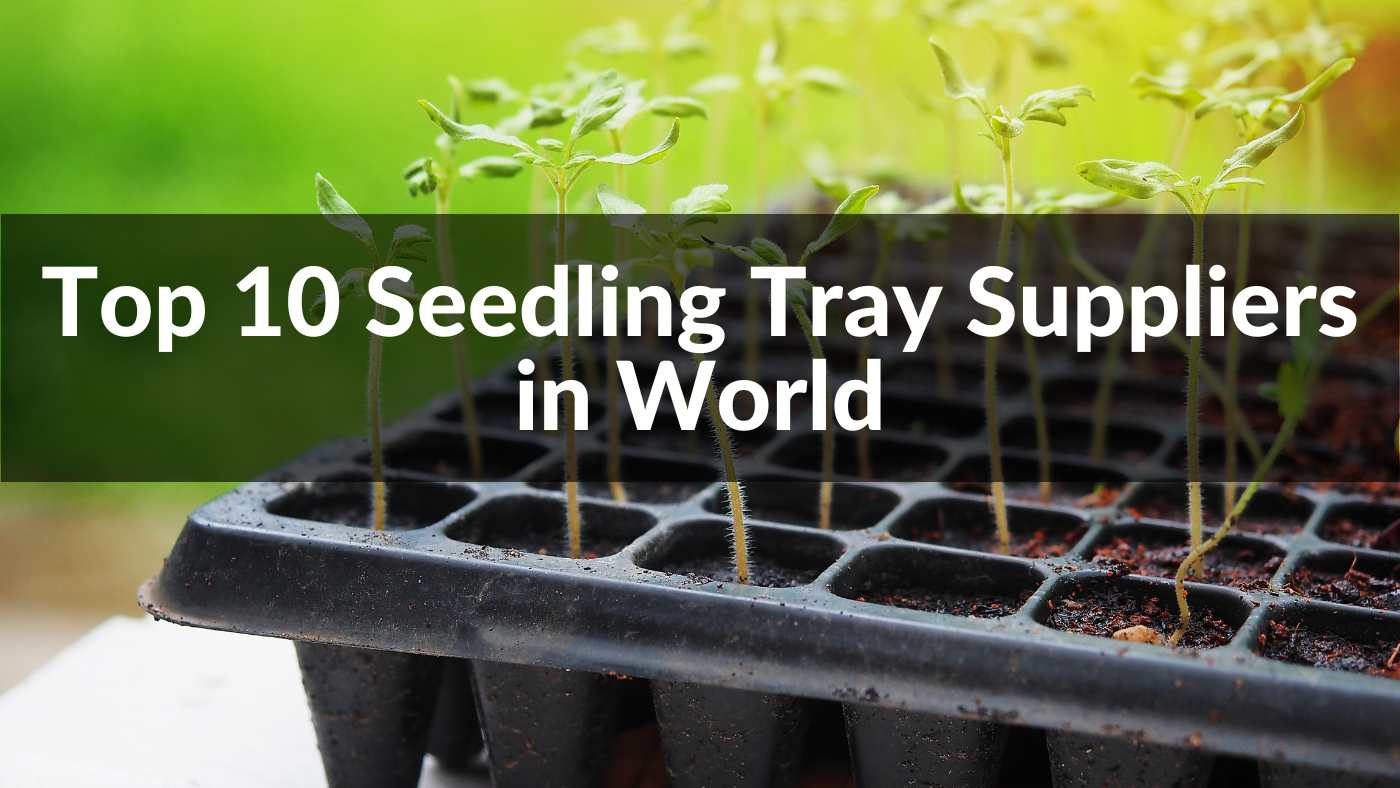Welcome to "The Ultimate Guide to Garden Seedling Trays: Everything You Need to Know," where we embark on a comprehensive journey through the world of garden seed starting supplies. Whether you are a novice gardener dreaming of a lush backyard oasis or a seasoned horticulturist looking to optimize your seed starting process, this guide is packed with essential information. From understanding the basics of garden seedling trays to mastering advanced tips and tricks, we cover it all. Dive into the significance of choosing the right garden seed starter trays, the benefits they offer, and how to use them effectively for a thriving garden that brings joy and bounty.
Embarking on the journey of creating a lush and vibrant garden starts with a crucial step: selecting the right garden seedling trays. This foundational decision can significantly influence your garden's success. Whether you're a seasoned gardener or a green-thumbed novice, understanding the importance of starting your garden with high-quality garden seed starter trays cannot be overstated.
Why, you might ask? Well, the right garden starter trays provide your seedlings with a nurturing environment where they can thrive. These trays ensure that your garden's beginnings are rooted in a controlled, supportive setting, crucial for delicate seedlings. The use of garden seed starting supplies, including garden grow plug and seed growing trays, plays a pivotal role in the germination process, offering consistent moisture, warmth, and the protection your seeds need to sprout effectively and healthily.
Furthermore, investing in the right seed tray garden supplies can lead to a more efficient gardening experience. These trays are designed to facilitate easy transplantation, minimize shock to the young plants, and ultimately, improve their survival rate. This efficiency not only saves time but also ensures that your garden will be populated with strong, healthy plants that are more capable of resisting pests and diseases.
Choosing the right garden seedling trays is not just about giving your seeds a place to start. It's about making a commitment to the future health and productivity of your garden. As a manufacturer dedicated to supporting gardeners in their quest for green excellence, we understand the critical role these trays play. Our range of garden seed starting supplies is designed with your gardening success in mind, ensuring that you have the best possible foundation for your garden.

Seedling trays, fundamental to any gardener's arsenal, serve a primary purpose: to provide a stable and efficient environment for the germination and growth of seeds into healthy seedlings. These trays facilitate the early stages of plant life, ensuring that each seed has ample space and resources to develop without competition. Available in various types, garden seedling trays cater to the diverse needs of gardeners and their plants. From traditional plastic trays to innovative silicone and biodegradable options, there's a seedling tray to suit every gardening style and environmental concern.
Plastic Trays: Durable and reusable, plastic trays are a popular choice among gardeners. They come in various sizes and can be cleaned and stored for future use, making them a cost-effective option for garden seed starting supplies.
Biodegradable Trays: For those looking to reduce their environmental footprint, biodegradable trays offer a sustainable alternative. Made from materials like peat, paper, or other organic compounds, these trays decompose naturally in the soil, eliminating the need for transplanting and reducing transplant shock.
Silicone Trays: Silicone trays, though less common, are gaining popularity due to their flexibility and ease of use. Seedlings can be easily popped out without damage, and the trays are simple to clean and sterilize, offering a long-lasting solution for gardeners.
Seedling trays come in a variety of sizes and shapes, designed to accommodate the varying needs of different seeds and gardeners. Standard tray sizes often range from 50 to 72 cells, with larger trays available for bigger plants or those requiring more room to grow. Choosing the right size and shape is crucial; it depends on the type of seeds you're planting, the space available for your trays, and how you plan to manage the seedlings once they've grown. Whether you're working with a compact garden space or a large greenhouse, selecting the appropriate garden seedling tray can make all the difference in the success of your gardening endeavors.
Seedling trays are not just a convenience; they are a game-changer in the world of gardening. By providing a controlled environment, these trays significantly enhance the germination rates of seeds. The consistent conditions of moisture, warmth, and light that seedling trays offer are ideal for germination, leading to a higher success rate compared to traditional direct soil planting. This controlled start not only ensures a higher yield but also gives gardeners a head start in the growing season.
One of the primary advantages of using garden seedling trays is the sheer convenience they offer. They simplify the seed-starting process, making it accessible even to novice gardeners. With pre-determined cell sizes, gardeners can efficiently manage the number of seeds planted, ensuring optimal space for each seedling to grow. Additionally, these trays make it easy to monitor and maintain the ideal growing conditions, significantly reducing the time and effort required in the early stages of gardening.
Using seedling trays offers unparalleled control over the growth of your plants from the very start. This control allows for the early identification and removal of weaker seedlings, ensuring that only the strongest plants are transplanted into your garden. Moreover, it facilitates the uniform growth of plants, as gardeners can easily manage light exposure, watering, and nutrient application evenly across all seedlings. This meticulous management leads to more robust, healthy plants ready to thrive upon transplantation.
In today’s environmentally conscious world, the availability of eco-friendly gardening options is more important than ever. Biodegradable seedling trays offer a sustainable alternative to traditional plastic trays. Made from organic materials, these trays can be planted directly into the soil, reducing transplant shock and eliminating plastic waste. This approach not only benefits the plants but also contributes positively to environmental conservation efforts, making it an excellent choice for gardeners looking to minimize their ecological footprint.

The first step towards a successful garden starts with proper preparation of your garden seedling trays. Selecting the right soil is crucial; a lightweight, nutrient-rich mix specifically designed for seed starting is ideal. This ensures that your seedlings have the best possible start, with easy access to the nutrients they need to grow strong. Before sowing any seeds, it’s essential to pre-moisten the soil. This step provides a welcoming environment for your seeds, making it easier for them to absorb water and begin the germination process. A uniformly moist soil helps prevent the drying out of seeds and promotes healthy root development from the start.
Planting seeds in trays is an art and a science. Techniques for sowing seeds evenly include using a seed dispenser for uniform distribution or the more hands-on method of placing seeds individually in each cell. Depth and spacing are vital considerations; seeds should be planted at a depth approximately twice their size, ensuring they have enough soil cover to germinate effectively while not being so deep that they cannot break through the surface. Proper spacing prevents overcrowding, allowing each seedling enough room to grow without competition for resources.
Watering techniques for seedling trays require a delicate balance – too much water can lead to root rot, while too little can cause seedlings to dry out and perish. A gentle spray or a watering mat that supplies moisture from below can keep soil consistently moist without overwhelming young plants. Fertilizing seedlings is the next step in ensuring their growth; however, timing is everything. Once seedlings have sprouted their first set of true leaves, a half-strength, balanced liquid fertilizer can be introduced, providing them with the nutrients needed to continue growing strong.
Optimal conditions for seedling growth include adequate light and a stable temperature. Most seedlings require about 14-16 hours of direct light daily to grow healthy and strong. Grow lights can offer a consistent light source, ensuring seedlings don't become leggy as they reach for the light. Additionally, using heat mats can help maintain a constant soil temperature, particularly crucial during the colder months or in cooler climates. These controlled conditions mimic the perfect spring day, every day, right in your home, setting the stage for a thriving garden.
Recognizing when seedlings are ready for transplant is key to ensuring their continued growth and success. Generally, seedlings are ready when they have developed their second set of true leaves. This indicates they have a sufficiently strong root system to handle the transition. Additionally, if seedlings start to show signs of being root-bound, with roots growing out of the drainage holes, or if they begin to outgrow their initial cell, it's time to move them to a larger space where they can continue to thrive.
Before transplanting, seedlings must undergo the hardening off process. This gradually acclimates them to the outdoor environment, reducing transplant shock and improving their survival rate. Start by placing seedlings outdoors in a sheltered, partially shaded area for a few hours each day, gradually increasing their exposure to sun and wind over a week. This process strengthens their cell structure and prepares them for the full range of outdoor conditions.
Transplanting seedlings from trays to their next home, whether it's a larger pot or directly into the garden, requires careful handling to ensure their best start. Here’s a step-by-step guide to transplanting seedlings:
Following these steps will help ensure a smooth transition for your seedlings, setting them up for successful growth in their new location.

Overcrowding in seedling trays can hinder growth by creating competition for light, nutrients, and air circulation. Thinning out seedlings is a necessary step to ensure the healthy development of plants. This involves carefully removing extra seedlings to allow the remaining ones adequate space to grow. When thinning, select the strongest and healthiest seedlings to keep, and gently pluck out the others. Doing so improves the overall health and yield of your garden by preventing the spread of diseases and reducing stress on the plants.
Damping off, a fungal disease that affects seedlings, can devastate young plants, causing them to wilt and die. Prevention is key, involving maintaining clean growing conditions, using sterile soil, and ensuring good air circulation around your seedlings. If damping off occurs, remove affected seedlings immediately to prevent its spread. For other common seedling diseases, similar preventative measures apply, along with the use of appropriate fungicides when necessary, always following the product's instructions carefully to avoid harming the plants.
Proper watering is crucial for the development of healthy seedlings, but it can be challenging to strike the right balance. Overwatering can lead to root rot and fungal diseases, while underwatering can stress plants, stunting their growth or even causing them to die. To avoid these issues, ensure your seedling trays have adequate drainage and water your seedlings with a gentle spray, keeping the soil consistently moist but not waterlogged. Monitoring the moisture level of your soil regularly is key to successful watering practices, allowing you to adjust as necessary to maintain optimal growing conditions.
For gardeners interested in sustainability and creativity, making your own seedling trays is a rewarding endeavor. Using materials like recycled paper, cardboard, or even egg cartons, you can create biodegradable trays that can be planted directly into the soil, minimizing transplant shock and waste. Additionally, reusing and recycling seedling trays, whether they're made from plastic, silicone, or other materials, is a fantastic way to reduce your gardening footprint. Cleaning and sterilizing these trays between uses ensures they're safe for your next batch of seedlings, contributing to a more sustainable gardening practice.
Exploring innovative seed starting techniques can enhance your gardening success. Pre-germination, or soaking seeds before planting, can speed up the germination process for many types of seeds. This method involves placing seeds between moist paper towels until they sprout, then carefully transferring them to seedling trays. Using growth enhancers, such as mycorrhizal fungi or seaweed extracts, can also promote healthier, more robust seedling development. These natural products enhance nutrient uptake and can improve resistance to stress and disease, giving your seedlings the best possible start.

When venturing into the selection of garden seedling trays, several factors should guide your decision. Durability is paramount; opting for trays that can withstand multiple seasons of use provides better value over time. The size of the tray and the number of cells it contains should match the scale of your gardening project and the space you have available. Material choice also affects sustainability and usability; whether you choose plastic, biodegradable, or silicone trays depends on your environmental concerns and gardening style. Lastly, price is a consideration, with the aim of finding a balance between cost and quality to fit your budget.
The ideal seedling tray varies depending on the type of garden you're cultivating. For vegetable gardens, trays with larger cells are beneficial, allowing more room for root development of bigger plants. Flowers, particularly delicate varieties, may thrive in smaller-cell trays that encourage dense growth without wasting space. Herbs, known for their hardiness, are less fussy but benefit from medium-sized cells that provide ample room for growth while still fitting compactly on a windowsill or balcony. Tailoring the tray choice to the type of garden not only enhances growth but also maximizes the efficiency of your gardening efforts.
In the market for top-rated seedling trays, research and reviews are your best friends. Look for products that boast high customer satisfaction and have proven their worth in gardens similar to yours. While specific product recommendations will vary based on current market availability and personal gardening needs, seeking out trays that offer a good balance of durability, size options, and environmental friendliness is a solid strategy. Reviewing gardening forums, blogs, and product review sections can provide insights into the best seedling trays for your garden, helping you make an informed decision that supports your green thumb ambitions.
As we conclude our journey through the world of garden seedling trays, we hope you are equipped with the knowledge and inspiration to start your garden right. Remember, the choice of garden seed trays can make a significant difference in your gardening success. For those seeking the highest quality garden seed starting supplies, look no further than Linkwin, a leading manufacturer dedicated to supporting gardeners worldwide. With our state-of-the-art garden grow plug and seed growing trays, your gardening endeavors are set to flourish. Thank you for joining us, and here's to a blooming and bountiful garden that starts with Linkwin.











We use cookies to make the website work, to provide advanced features, social media and traffic analysis, and we use analytics and third-party advertising cookies. If you choose to click "Deny All", you will retain the default setting of not allowing the use of cookies or other tracking tools other than technical tools.

